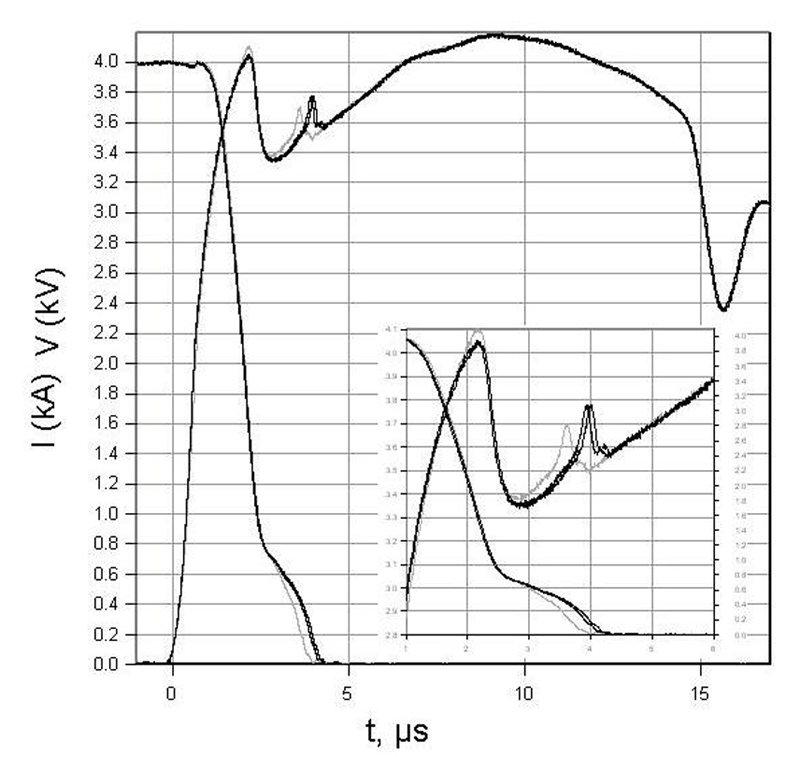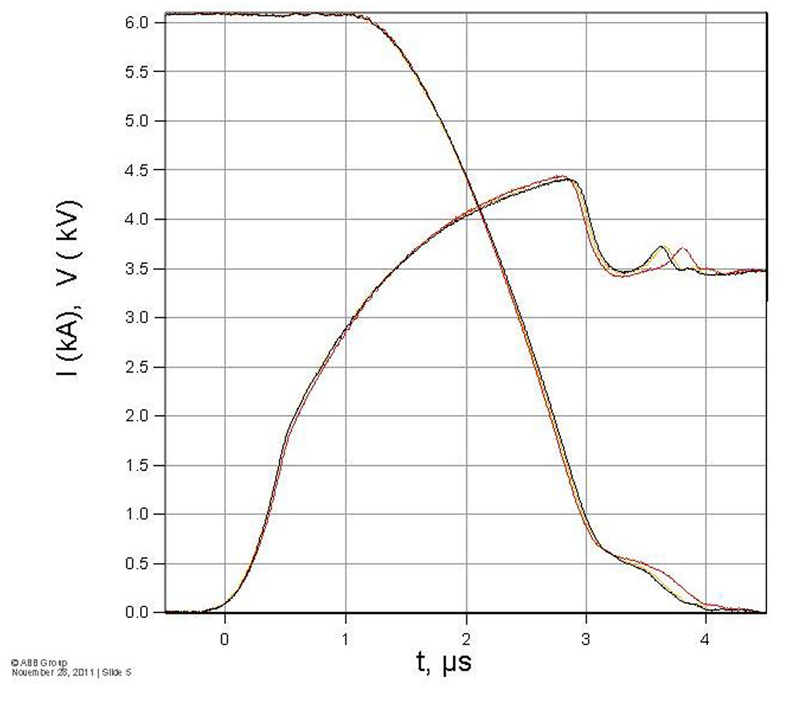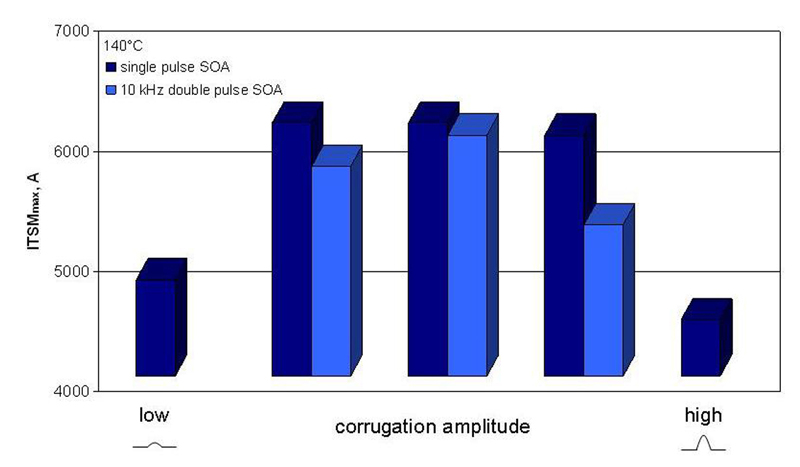Author:
Willie Chan?, Sr. Product Marketing Engineer?, μModule Power Products, Linear Technology
Date
01/31/2012
The influence of clouds, trees, dirt, on the solar cell panel and the rotation of the sun causes problematic fluctuations in the amount power generation. The typical output current and output voltage characteristics for solar cell panels are shown in Figure 1. An interesting trend emerges in that regardless of the lighting conditions for a given panel, the maximum output power will be delivered when the output voltage is at a relatively constant voltage, VMPP. The I-V curves shown in Figure 1 demonstrate this property by using successively increasing loads under constant illumination conditions that were quickly simulated by facing the panel at various angles to the sun.

The data in Figure 2 was gathered within a minute period with the panel aimed directly at the sun under clear skies. As indicated by the graph, an uncontrolled load could cause the net output power to vary anywhere from under 2 Watts to 47 Watts in direct sunlight. If it were possible to maintain the output voltage of the panel constant at approximately 13V, we could be assured that the maximum amount of power is available to the load.

Optimizing Solar Cell Power A convenient approach to reduce impedance mismatch is achieved by employing a Maximum Peak Power Tracking (MPPT) circuit between the output of the solar cell panel and the load. The circuit may be built with a device such as the LTM®8062 switching μModule® battery charger. The MPPT offered by the LTM8062 is a simple solution adjustable by a single resistor to ensure maximum power is delivered to the load under widely varying illumination conditions. The effectiveness of the MPPT circuit may be best demonstrated by comparing the output power of two identical set-ups using a Solec S-70C panel with MPPT enabled and MPPT disabled, the latter implemented by pulling the VINREG pin of the LTM8062 to VIN. The test circuit schematic is presented in Figure 3.

The LTM8062 is a highly efficient integrated constant current, constant voltage (CC/CV) step-down switching battery charger solution accepting a 4.95V to 32V operating input voltage range. The user-programmable battery float voltage up to 18.8V allows it to support a battery stack consisting of up to 8 cells of sealed lead acid, 4 cells of Li-Ion or Li-poly, or 5 cells of LiFePO4. The integrated MPPT circuit saves a great deal of design complexity compared to a discrete implementation suggested by other industry members consisting of more than ten components. As mentioned previously, the circuit drives the LTM8062 to automatically reduce or increase the battery charge current up to 2A to source the maximum output power from the solar cell(s). In the most basic application, the LTM8062 requires just 3 external components for operation in comparison to anywhere from 15 to 30 components for a traditional discrete implementation. The charging process terminates after a user-adjustable time period expires or charge current falls to a minimum threshold (200mA) with a battery voltage accuracy of 1.5% over temperature. Two open-collector status indicators CHRG and FAULT are compatible for use with LEDs for visual cues. The CHRG indicator signals when the device is charging the battery. The FAULT indicator signals if the battery has not responded to charge within a fixed time period or if an overtemperature condition has occurred using the optional NTC thermistor input pin. The LTM8062 will automatically recharge the battery should the voltage drop below 2.5% of the programmed float voltage or a new battery has been inserted. An internal blocking diode is available to prevent reverse current from the battery back to the source when the solar cell voltage collapses at night. For increased charge current, the outputs of multiple LTM8062s can be paralleled together. In this arrangement the modules can share a single pair of feedback resistors as shown in Figure 3. Three LTM8062 modules were connected in parallel for a maximum charge current of 6A �7.5% in the constant current charging state. Since the initial charge state of the battery in a real world application is highly variable depending on the system usage, size of the battery, and sky conditions on prior days among other factors, an electronic load was used to simulate a maximum power draw from the solar panel approximately at the transition between constant current and constant voltage charge regions of the battery. By challenging both circuits at this operating point, we can be certain the circuit will support all other events in the charge cycle. With an 8.4V charge termination voltage corresponding to a two-cell Li-Ion stack, the electronic load was asked to pull up to 6A from the three LTM8062 charger modules in parallel while maintaining a voltage of approximately 8V. The current and power delivered to the simulated battery cell is dramatically higher with the MPPT circuit active compared to the circuit inactive. The current to the load showed a 20% - 40% improvement with the exception of the noon period where the LTM8062's internal maximum charge current limit was reached when MPPT was enabled. Reliable Energy Efficient Illumination With the maximum output power now efficiently stored in the battery, the most reliable and efficient way to provide nighttime illumination today is with LEDs. Cost of ownership is also reduced as LEDs last ten times longer than their fluorescent counterparts. Furthermore, LEDs require DC power to ensure operation fits perfectly with the DC power available from the solar cells and batteries. Mirroring the LTM8062 in efficiency, reliability, and convenience, the LTM8042 constant current LED driver presents a worthwhile solution for illumination needs. Whether a boost, buck or even buck-boost operation is required, the LTM8042 and LTM8042-1 are easily configured to deliver a constant current up to 1A and 350mA, respectively. In this experiment, the simulated 8.4V Li-Ion battery pack would deliver most of its energy at approximately 7V, allowing the LTM8042 to support a 700mA LED string up to 16V for a luminous flux of 1300 lumens using neutral white XLAMP XM-L LEDs by Cree. With the same battery pack, the LTM8042-1 could drive a 24V LED string at up to 350mA, delivering a luminous flux of 1040 lumens using neutral white Luxeon Rebel ES LEDs by Lumileds. If two solar panels are stacked in series to raise the VMPP to 26V and the battery stack is increased to 16.8V, a luminous flux up to 2880 lumens can be achieved with the XLamp XM-L LEDs or 1430 lumens with Luxeon Rebel ES at 350mA. Both the LTM8042 and LTM8042-1 form a complete LED driver solution operating from an input voltage of 3V to 30V, requiring as few as 3 external components. To save power during dusk and dawn hours, the LTM8042 supports two dimming methods. A dimming ratio up to 3000:1 can be achieved using a PWM input. Analog dimming can be applied using a resistor or voltage. The switching frequency is adjustable from 250kHz to 2MHz and can be synchronized to an external clock up to 2.5MHz for noise-sensitive applications. Clear Communication is Key Low noise radiated solutions are important in wireless communications for improved signal reception and transmission. Linear Technology offers eight simple and easy to use DC/DC step-down μModule regulator products which are certified to meet the EN55022 Class B radiated EMI (electromagnetic interference) specification with the highest output power ratings in the industry. Tests were performed using the standard demonstration board whose Gerber files are available to all design engineers. Their EMI performance is proven by third-party independent tests reports which may be reviewed online. Linear Technology's line of EN55022 Class B certified step-down μModule regulators accept operating input voltages up to 36V and deliver output currents up to 8A with support for accurate output current sharing among multiple modules increasing output current capability to over 32A. Engineers designing wireless communications networks with high uptime requirements have already found them to be a valuable tool. Conclusion The Maximum Peak Power Tracking feature of the LTM8062 μModule battery charger delivers up to a 40% increase in the amount of power extracted from a solar cell panel in a compact, convenient reliable and efficient solution. ? www.linear.com